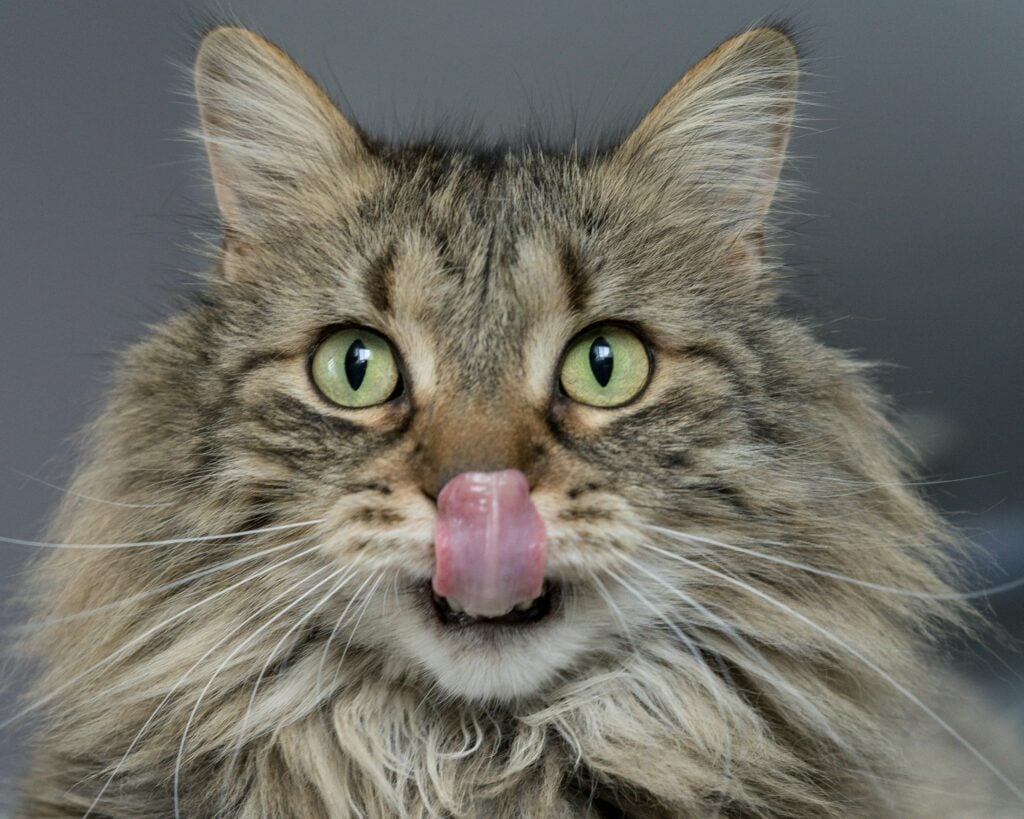


Total awareness is the gestalt of the five senses, something probably every animal is capable of, including humans, though we’ve long lost the ability to use it. Cats’ rely heavily on this gestalt, or total focus of the senses. More on this at the bottom.

Cats see very well in low light but are as blind as we are in no light and don’t see as well as we do in high light situations. Their vision is optimized for dawn and dusk but they do well on non-new moon nights. Naturally enough. They are nocturnal and in the wild do most of their hunting between dusk and dawn.
Although not as good at seeing detail in daylight, at night they see far more detail than we do and their peripheral vision is greater than than ours. Cats can see an arc of 200° and we 180°.
Cats do see colors, (blue and yellow particularly, it is thought), though not as vividly as we. Their perception of motion is more important and more developed and at which they are extremely adept. Their hearing also contributes to this as they can track movement with their ears with great accuracy, thus helping them focus their vision. More on this below.
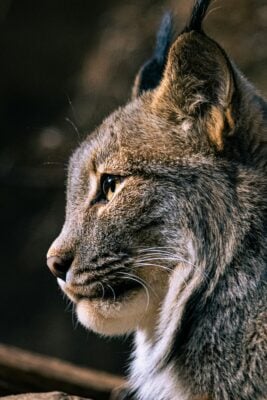
Of all cats’ senses, hearing is their most acute. What cats lack in vision they more than make up for in hearing with an auditory range two octaves higher than we hear and a half to a full octave higher than dogs. Better still, they can triangulate for the source of a sound with their ears by using each ear independently, comparing the minute differences in tone and arrival time of the sound. This ability, along with excellent perception of movement contributes enormously to their ability to hunt, thus; survive.
A cat walking within a yard of a colony of mice active beneath a foot of snow can hear their high-pitched squeaks (which we wouldn’t even hear above the snow) with sufficient accuracy as to be able to pinpoint the source, launch himself into the air and come down through the snow in exactly the right spot and come up with a mouse in his mouth. No wonder they’ve survived so long in so many varied environments.
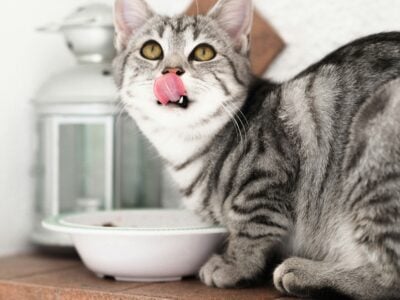
Taste is the most deficient of cats’ senses with merely 500 taste buds (we have 9,000). Although they taste sweetness it is probably the least attractive to them, which many scientists think is why they evolved as carnivores, rejecting sugar rich vegetation so desired by other animals, though clearly there are exceptions to this. They do distinguish salt, sour and bitter and preferences for those tastes may vary from cat to cat.
Science insists that cats don’t taste sweet but there are many of us who know our cats to eat sweet foods. Jackie, of Thirstycats, had a cat (MooMoo) ,who would tear into the grocery bag if it contained blueberries and eat his fill. Perhaps he smelled something in them he needed. Which brings us to the next sense
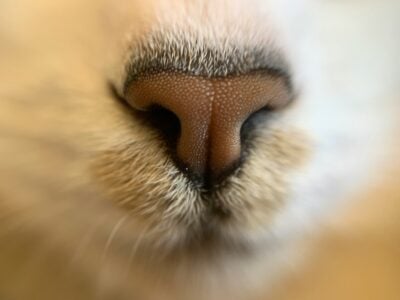
Although inferior to dogs, cats’ sense of smell is 14 times superior to humans with twice the number (200 million compared to 5 million) of scent sensors in the nose. Cats also have a sensor in the roof of their mouth called the Vomeronasal organ with which it might be said they ‘taste’ the air.
As with us, cats’ sense of taste is inseparable from their sense of smell. Warm food is more appealing to them because it is more fragrant. Cats prefer their food to be the same temperature as their tongue, about 101 degrees F. (If you are feeding your cat wet food from the frig and he isn’t going for it, try warming it up a bit with hot water. The increase in fragrance is more apt to stimulate his hunger.)
Being carnivores, they have a high degree of sensitivity to the quality of meat as decaying meat produces nitrogen compounds which have an odor to which cats are attuned. This explains why your cat would eat the wet food you offered him yesterday but turned his nose up at food from the same can today. It’s not that it’s gone bad. It is that it has gone far enough toward bad to not be not to his liking. Anyway, he knows he’ll get fresh if he just waits a bit. We are so well tranined.
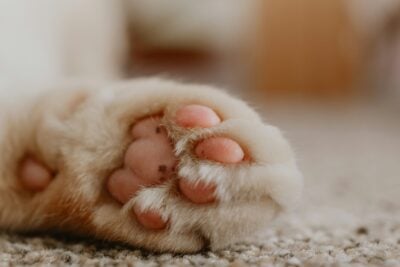
Touch includes a great deal more than what they feel with their paws, which they use to tell temperature, texture and vibration, as well as to make contact with others (us included) and to move things, but most of a cat’s sense of touch involves his body and whiskers.
When the wind blows through our hair we learn that the wind is blowing and maybe from which direction. A cat has receptors throughout his body and movement of the hair of his body activatese those, conveying a great deal more information than we get; for example, atmospheric pressure, temperature and even humidity. (Wet air is heavier).
It is especially cats’ whiskers, which are embeded deeper into the body and connected to muscles and nerves, that inform him so well of his present circumstances. Air currents and especially changes in air currents are an important indicator for navigation. A nearby opening in a fence or wall, for example may be detected this way, as air tends to pass through them at a higher rate. They are also used in determining the size of openings.
The whiskers can also detect movements of objects and beings nearby. When something moves, it moves the air and a cat’s whiskeres can pick that up.
A cat’s whiskers are also feelers, conveying a great many important factors about something they come into contact with, allowing them to avoid furter contact or to change their relationship and behavior to something they encounter.
Most cats don’t like to have their whiskers pressed or compressed. The amount of sensation they experience, (and in inwanted contact, unpleasant sensation), is difficult for us to imagine but it seems to be fairly intense and they can get ‘whisker fatigue’. It is’t actually the whiskers that get fatigued, it is the neves they are attached to. The firing of synapsis creates overload of sensation and is, simply, tiring to those nerves. They need a rest.
Too narrow a food or water source can cause this. (The first concern we have when matching center pieces to bowls at ThirstyCats is; is there enough room for a cat to comfortably get his head in there and drink from the bowl without scrunching his whiskers? We try to make sure there is.
Cats’ whiskers are also important in communication. Whether they are relaxed and slightly drooping, upright and pointing to the side or forward or are flatened against the face, any other cat will read what that means and respond accordingly.
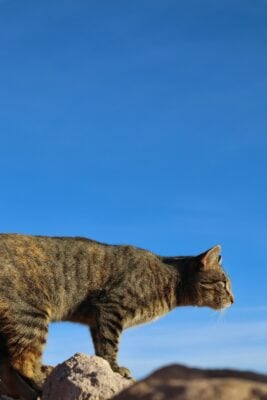
Many a meditator, concentrator and persuer of bodily control has envied the cat’s ability for total focus. We don’t often notice it because it is an internal focus of the cat which uses all his senses which we don’t often perceive him doing.
Imagine; sight, scent, hearing, taste (the vomeronasel), touch (paws, fur and whiskers) – all focused toward one thing (a being, event). Each sense is conveying different data but all those perceptions are coming from one thing, proividing the cat with a great deal more information than any one or two senses could provide alone. His capacity to understand whatever it is he is focused on, in his terms and what it means to him, is enourmsly hightened. That is the power of total awareness. This gestalt of the senses may also be related to what has been referred to through the ages as a cat’s sixth sense.
Here is a link to cat communication and here is another post on cats’ body language.